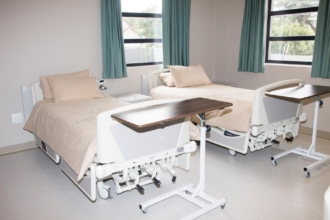Top hospice deficiencies
- Failure to appropriately individualize care plans
- Failure to provide services listed in a patient’s care plan
- Failure to properly train or manage aide staff
- Failure to adequately assess patients
- Failure to update assessments in a timely manner
Hospice care facilities fulfill an essential role in society: to ensure our loved ones depart with grace and in comfort. In large part, an army of compassionate, supportive hospice leaders and staff members carry out this mission. But their efforts are only successful if the facilities where they work are well managed and comply with strict Medicare regulations put forth by the Centers for Medicare & Medicaid Services (CMS).
Part of the Department of Health and Human Services (HHS), CMS is a federal agency that establishes regulations and associated standards for healthcare providers; it also provides health coverage to more than 100 million people through Medicare, Medicaid, and other federal health programs.
Unfortunately, even top-rated hospice facilities can present deficiencies when state agencies or accrediting organizations survey (the industry term for inspect) them. CMS contracts with state survey agencies to conduct these surveys, typically when the hospice is seeking certification or when patients or their families have complained about the hospice. CMS-approved accreditation organizations may also conduct surveys.
The importance of hospice surveys
The purpose of a hospice survey is to assess whether a facility meets federal health and safety standards. A hospice will have a deficiency citation if it fails to meet a Medicare program requirement. Failure to meet these standards can negatively impact patient safety and care, not to mention reimbursement opportunities for hospice owners. Once these issues are identified, hospice owners have the opportunity to remedy them.
Meeting every Medicare program requirement isn’t easy. According to a 2019 report by the Office of Inspector General (OIG) for HHS, surveyors found at least one deficiency in more than 80 percent of hospices from 2012 to 2016, and 20 percent had at least one serious deficiency. The most common types included
- Poor care planning (59 percent)
- Mismanagement of aid services (53 percent)
- Inadequate assessments of beneficiaries (40 percent)
We go into more detail on the top hospice deficiencies from this report below and provide recommendations on how to avoid them.
5 top hospice deficiencies and how to avoid them
1. Failure to appropriately individualize care plans
According to 418.56 of the Code of Federal Regulations, patients must receive a written plan that specifies the care and services necessary to “meet the patient and family-specific needs identified in the comprehensive assessment as such needs relate to the terminal illness and related conditions.”
The OIG report indicates that many hospices failed to appropriately tailor care plans to individual patients. As an example, it notes how a patient with dysphagia — difficulty swallowing — at one hospice did not receive care that addressed this unique need.
To avoid this deficiency, your physicians and interdisciplinary groups (IDGs) need to be methodical in not only assessing patients but also documenting their distinct needs so that staff have a proper record of the care they should deliver.
2. Failure to provide services listed in a patient’s care plan
In some cases, even though a hospice properly individualized the care plan, it didn’t deliver all of the services in the plan. For example, the report notes how the care plan of one patient called for weekly nurse visits; however, the hospice didn’t provide nurse visits for two weeks in a row.
Avoiding this issue depends on the root cause, as it may be related to protocols or staffing shortages. It isn’t always feasible to hire more staff, but your hospice should at least have procedures and associated checklists in place that mitigate planned service disruptions or lapses.
3. Failure to properly train or manage aide staff
Some hospices showcased a lack of care competency among staff members. For example, 75 percent of aides at one hospice didn’t have appropriate skills related to “toileting and transfer techniques.”
Training should be rigorous to ensure only competent staff are addressing patient needs. Develop a standardized training program that all new hires must pass before delivering care.
4. Failure to adequately assess patients
The type of care a patient receives directly stems from the patient’s assessment. Lack of rigor in assessments can lead to negative patient outcomes. In some example cases, this included a failure to review patients’ history of pain and drug profiles for medication effectiveness.
Patient care should be a top priority for everyone, especially for the physicians and IDGs who create care plans. Be sure to provide them with the proper tools (e.g., forms, checklists) to ensure they conduct full-point assessments.
5. Failure to update assessments in a timely manner
Patient assessments aren’t a one-time occurrence — a hospice must ensure a physician performs them at least every 15 days to keep the patient’s care plan up to date. At some hospices, patients went several months without receiving an updated comprehensive assessment.
Use a system that keeps track of and reminds physicians when it’s time to conduct assessments for each patient so you can avoid human error.
Jotform Enterprise: Improved processes and hospice survey outcomes
The lack of consistency in the deficiencies above are associated with processes that need improvement. Solid processes produce consistent outcomes. You can support your processes with Jotform Enterprise, a secure solution that enables efficient hospice operations. Mitigate or even avoid the top hospice deficiencies with this powerful tool.
Help your staff streamline intake and discharge, and improve operations with a number of easy-to-build forms:
- Hospice referral form: Get all the details you need from hospitals and other referring organizations, including patient and physician information.
- Hospice consent form: Ensure you have a proper record of a patient’s acceptance of care.
- Hospice discharge summary form: Maintain a proper record of a patient’s discharge, including physician instructions and prescribed medications for care at home or another facility.
These and other hospice care forms help streamline your hospice admissions process for employees and patients alike because they’re easy for administrators to create and for patient families to access. Plus, you can customize the forms in just minutes with our no-code builder so they perfectly suit your hospice’s unique needs.
In addition, hospice administrators can assign custom permissions to different users, ensuring that only the right people see confidential patient information. Start building forms for your hospice business today.
Photo by Skiathos Greece on Unsplash


















Send Comment: